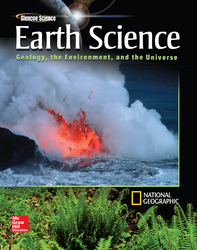1 A) epicycle B) retrograde motion C) perihelion D) eccentricity 2 A) epicentric B) geocentric C) heliocentric D) eccentric 3 A) its greenhouse effect B) its high albedo C) its high atmospheric pressure D) its surfuric acid rain 4 A) three, two B) one, two hundred C) one hundred, one D) twenty-four, one 5 A) ring systems and moons B) are very large, 1 - 300 times the mass of Earth C) composed of lightweight elements such as hydrogen and helium D) All of the answers are correct. 6 A) the formation of Saturn B) gravitational attraction of ringlets C) solar system formation D) leftover debris from moons that were destroyed 7 A) hydrogen and helium B) hydrogen, helium, and ammonia ice C) sulfuric acid and hydrogen D) helium and oxygen 8 A) the Giant Red Dot B) the Great Dark Spot C) the Spot D) the Big Cloud 9 A) a large planet broke into many pieces. B) a cloud of interstellar dust and gas began to condense. C) stars collided with one another. D) Jupiter formed as the largest planet. 10 A) Mercury B) Venus C) Earth D) Mars 11 A) the Sun and several other stars B) our solar system C) the Milky Way galaxy D) all solar systems 12 A) If our star has planets, then others must have them. B) There is evidence of a weak gravitational pull working on other stars. C) Other stars may have formed at the same time as the Sun. D) Space probes have returned photographs of these planets. 13 A) Earth's revolution around the Sun B) the rotation of the Milky Way C) the elliptical orbits of the planets D) the distortion of starlight by the atmosphere 14 A) Jupiter B) the Andromeda galaxy C) a large comet D) Venus 15 A) 15 million years B) 250 million years C) 4.6 billion years D) 15 billion years





